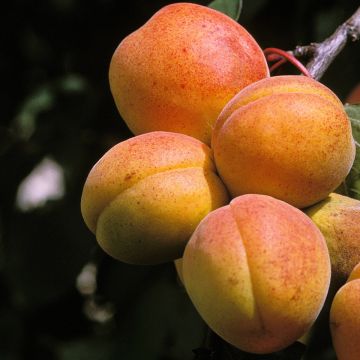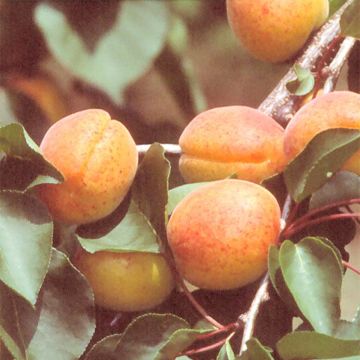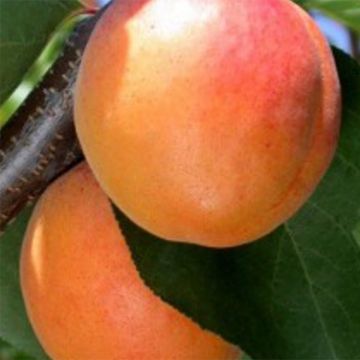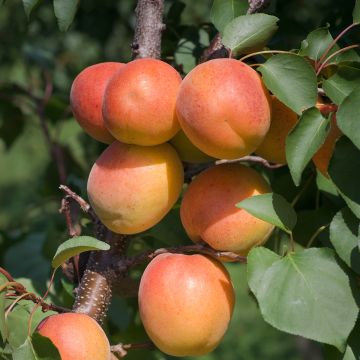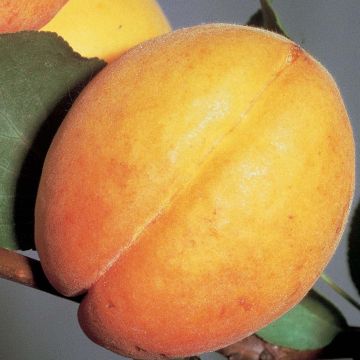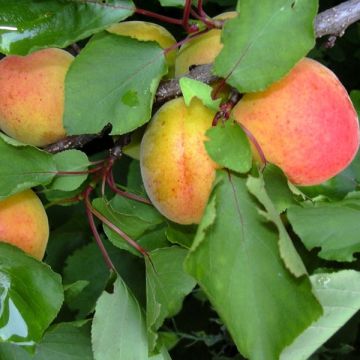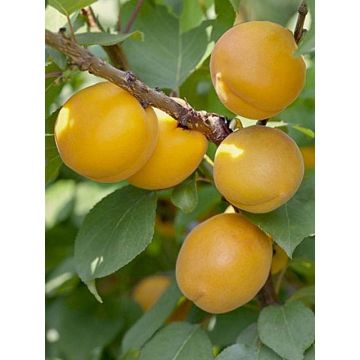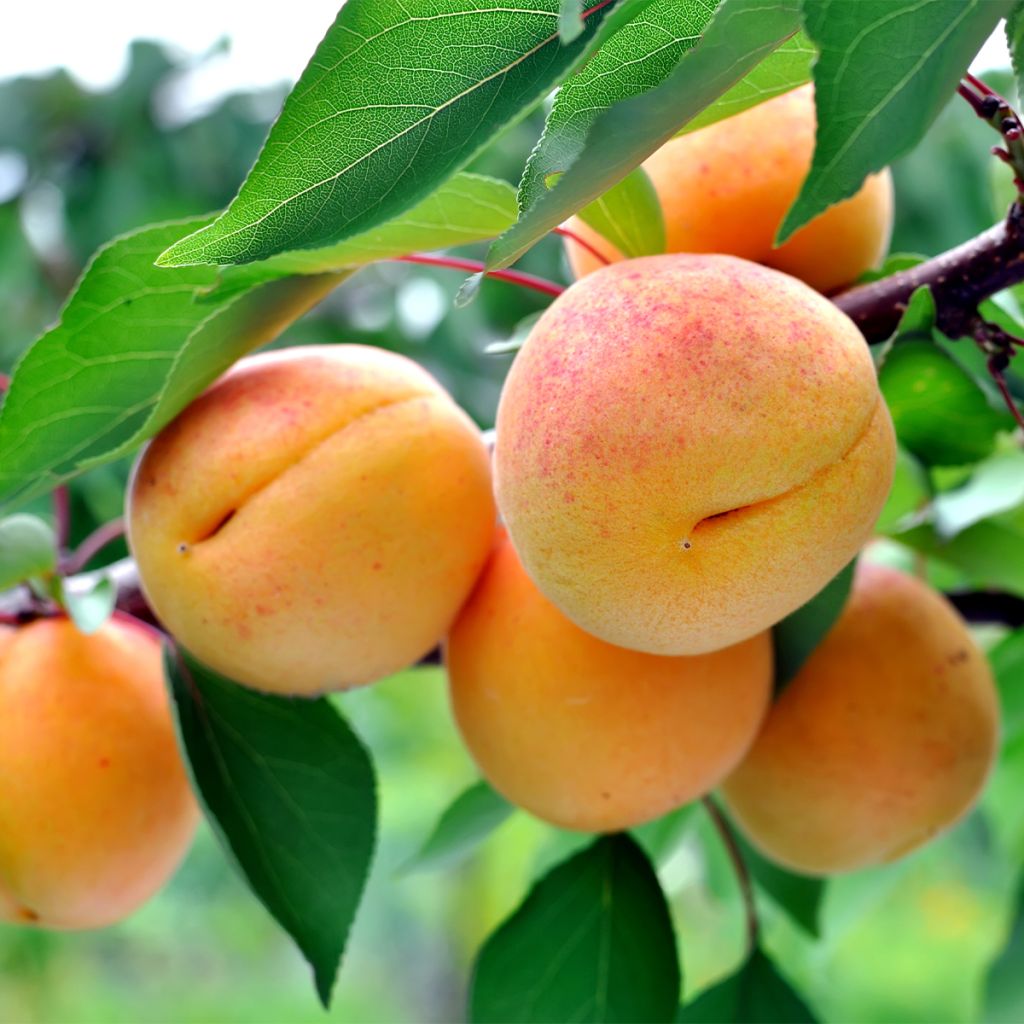

Abricotier - Prunus armeniaca Nanum
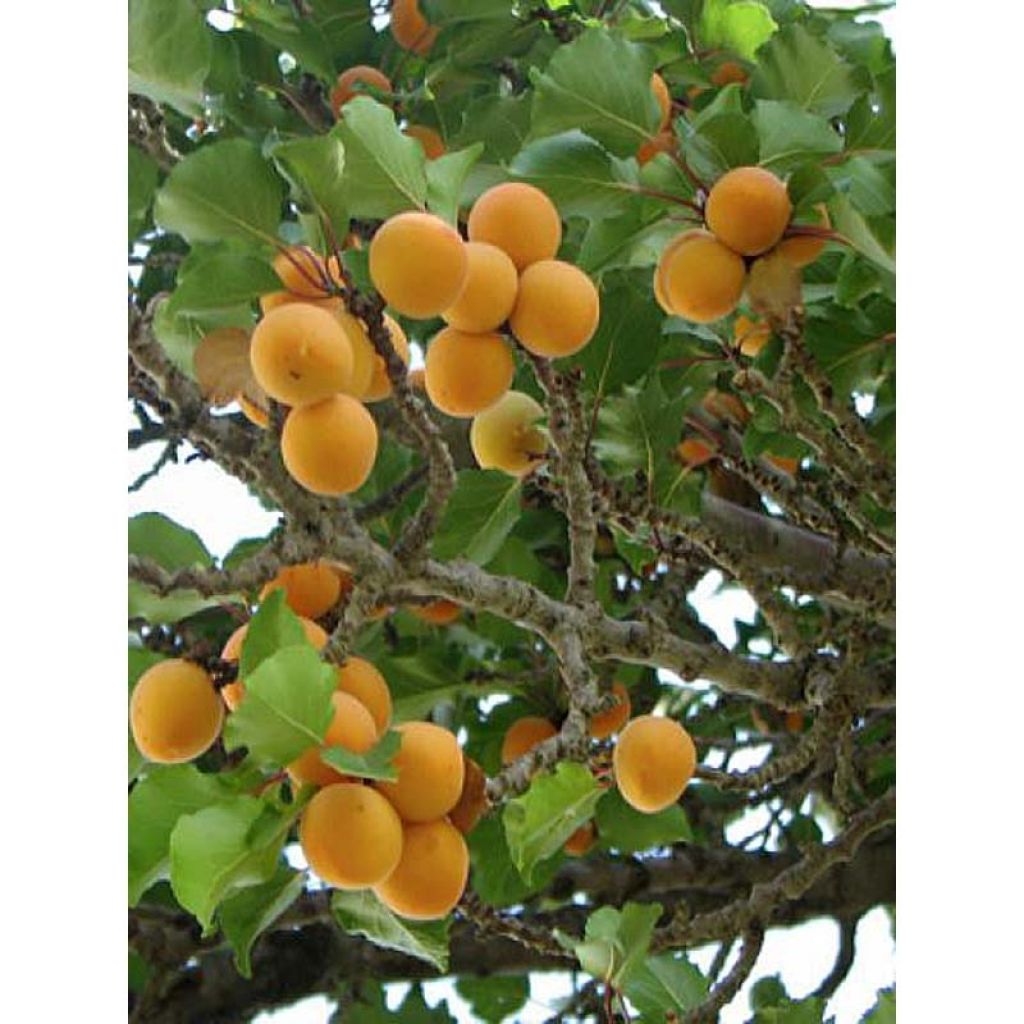

Prunus armeniaca Nanum - Apricot Tree
Prunus armeniaca Nanum - Apricot Tree
Prunus armeniaca Nanum
Apricot
Careful delivery, apricot tree not in the best shape, but I hope it will recover well.
Elise, 20/08/2024
This item cannot be shipped to the selected country
Delivery charge from €5.90
Delivery to Corse prohibited
More information
Schedule delivery date,
and select date in basket
This plant carries a 6 months recovery warranty
More information
We guarantee the quality of our plants for a full growing cycle, and will replace at our expense any plant that fails to recover under normal climatic and planting conditions.
From €5.90 for pickup delivery and €6.90 for home delivery
Express home delivery from €8.90.
Delivery to Corse prohibited: UE law prohibits the import of this plant from mainland France to Corse as part of the fight against Xylella fastidiosa. Please accept our sincere apologies.
More information
Description
The Prunus armeniaca Nanum or Nana is a dwarf and slow-growing form derived from the wild apricot tree. It is well suited to small gardens and container cultivation. This small fruit tree has a charming early spring bloom of white, followed by medium-sized orange apricots, sometimes tinged with red in the sun, that ripen in June-July.
The apricot tree is native to Central and Eastern Asia. It has been cultivated in China since 3,000 BC. At the beginning of the Christian era, the apricot tree we cultivate (Prunus armeniaca) was introduced to the Mediterranean basin from Armenia, hence its name. Its introduction to France took place during the Renaissance. The Nana Apricot tree, scarce in cultivation, is distinguished from the wild apricot tree by its reduced development and slower growth. At maturity, after 15 years, it will reach approximately 3-4 m (10-13ft) in height by 2.50 m (8ft) to 3 m (10ft) in spread. Its habit is nicely rounded, with a reasonably short trunk often slightly twisted, topped by a wide and well-furnished crown: the bark, grey-brown in colour, flakes with age.
The leaves of the apricot tree are deciduous; they fall in autumn. They have toothed, heart-shaped edges and are carried by a long red petiole. The flowering of the Nana Apricot tree occurs in March, earlier or later, depending on the region, before the appearance of the leaves. The previous year's branches carry the flowering. The flower has five white petals, sometimes tinged with pink and purple sepals. It is fragrant but only lasts a short time. The Dwarf Apricot tree is self-fertile: it does not require the presence of another apricot tree for pollination. Fruit production will result in fruit ripening from late June to early July. These are ovoid drupes, measuring 3 to 5 cm (1 to 2in) in length. At ripeness, the apricots are bright orange, more or less speckled or tinged with red on the side exposed to the sun.
Apricots are consumed fresh, dried, or prepared in jams, tarts, compotes, or syrup. They are also found in savoury dishes, such as rabbit with apricots and parsnips, an English recipe. Apricot juices are advantageously mixed with a touch of peach juice to balance the apricot's natural acidity.
Report an error about the product description
Prunus armeniaca Nanum - Apricot Tree in pictures
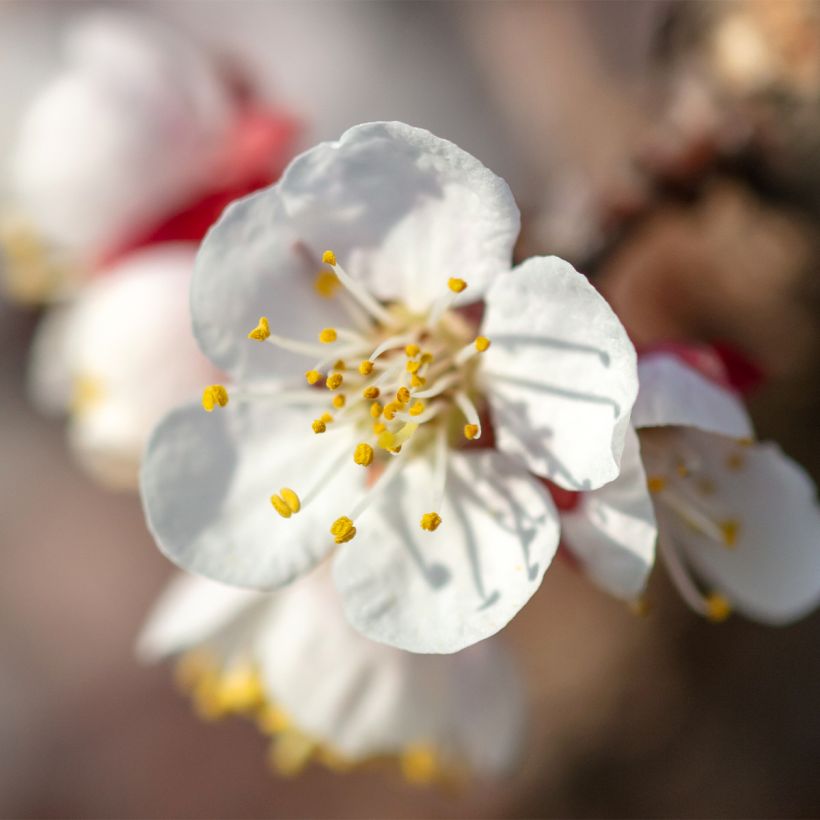

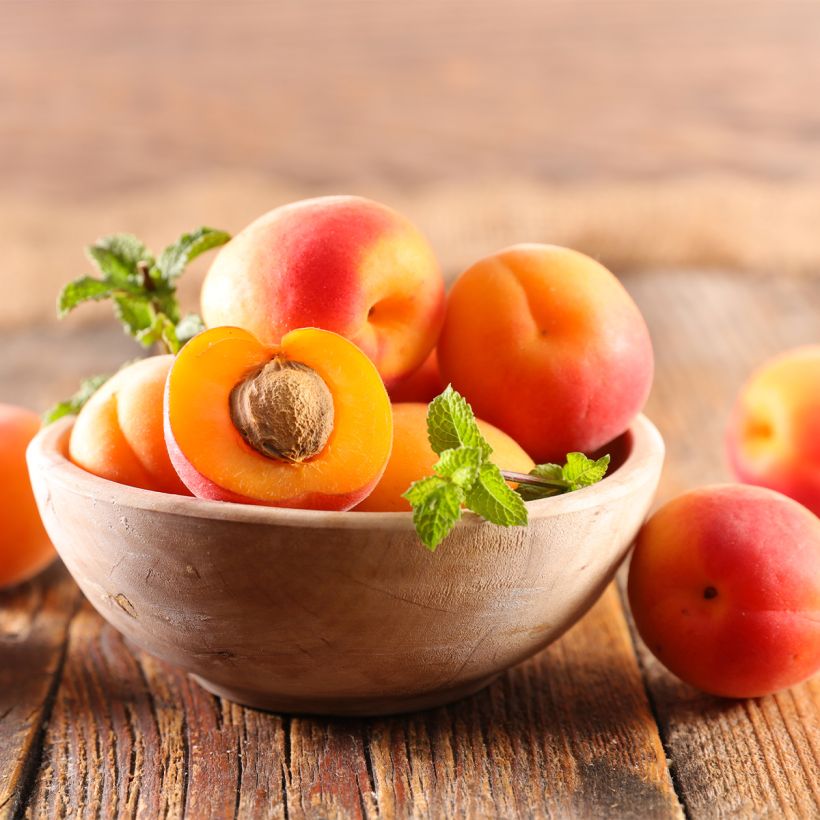

Plant habit
Fruit
Flowering
Foliage
Botanical data
Prunus
armeniaca
Nanum
Rosaceae
Apricot
Cultivar or hybrid
Other Apricot trees
Planting and care
The planting of the apricot tree preferably takes place at the beginning of winter, when the tree is in vegetative rest, and before the frosts. To plant several apricot trees, space them at least 1.5m (5ft) apart. Dig a hole two to three weeks before planting, twice as wide and deep as the pot. On the chosen day, place the tree with its pot in a water basin to moisten the entire root ball by capillarity. Add compost to the bottom of the hole. Place the tree in the hole and fill it with soil mixed with compost. Firmly tamp down at the base. The root ball should be covered entirely. Water abundantly.
The Nanum Apricot Tree is not very demanding regarding soil type; it tolerates limestone and slightly rocky soils. It will ideally thrive in rich, light, fresh, and, above all, well-drained soil: it does not tolerate clayey and suffocating soils or stagnant water. Plant it in a sunny location and shelter it from the winds from the North and East.
In compact and poorly drained soil, it can be sensitive to mildew, canker, and root rot.
Planting period
Intended location
Care
-
, onOrder confirmed
Reply from on Promesse de fleurs
Haven't found what you were looking for?
Hardiness is the lowest winter temperature a plant can endure without suffering serious damage or even dying. However, hardiness is affected by location (a sheltered area, such as a patio), protection (winter cover) and soil type (hardiness is improved by well-drained soil).

Photo Sharing Terms & Conditions
In order to encourage gardeners to interact and share their experiences, Promesse de fleurs offers various media enabling content to be uploaded onto its Site - in particular via the ‘Photo sharing’ module.
The User agrees to refrain from:
- Posting any content that is illegal, prejudicial, insulting, racist, inciteful to hatred, revisionist, contrary to public decency, that infringes on privacy or on the privacy rights of third parties, in particular the publicity rights of persons and goods, intellectual property rights, or the right to privacy.
- Submitting content on behalf of a third party;
- Impersonate the identity of a third party and/or publish any personal information about a third party;
In general, the User undertakes to refrain from any unethical behaviour.
All Content (in particular text, comments, files, images, photos, videos, creative works, etc.), which may be subject to property or intellectual property rights, image or other private rights, shall remain the property of the User, subject to the limited rights granted by the terms of the licence granted by Promesse de fleurs as stated below. Users are at liberty to publish or not to publish such Content on the Site, notably via the ‘Photo Sharing’ facility, and accept that this Content shall be made public and freely accessible, notably on the Internet.
Users further acknowledge, undertake to have ,and guarantee that they hold all necessary rights and permissions to publish such material on the Site, in particular with regard to the legislation in force pertaining to any privacy, property, intellectual property, image, or contractual rights, or rights of any other nature. By publishing such Content on the Site, Users acknowledge accepting full liability as publishers of the Content within the meaning of the law, and grant Promesse de fleurs, free of charge, an inclusive, worldwide licence for the said Content for the entire duration of its publication, including all reproduction, representation, up/downloading, displaying, performing, transmission, and storage rights.
Users also grant permission for their name to be linked to the Content and accept that this link may not always be made available.
By engaging in posting material, Users consent to their Content becoming automatically accessible on the Internet, in particular on other sites and/or blogs and/or web pages of the Promesse de fleurs site, including in particular social pages and the Promesse de fleurs catalogue.
Users may secure the removal of entrusted content free of charge by issuing a simple request via our contact form.
The flowering period indicated on our website applies to countries and regions located in USDA zone 8 (France, the United Kingdom, Ireland, the Netherlands, etc.)
It will vary according to where you live:
- In zones 9 to 10 (Italy, Spain, Greece, etc.), flowering will occur about 2 to 4 weeks earlier.
- In zones 6 to 7 (Germany, Poland, Slovenia, and lower mountainous regions), flowering will be delayed by 2 to 3 weeks.
- In zone 5 (Central Europe, Scandinavia), blooming will be delayed by 3 to 5 weeks.
In temperate climates, pruning of spring-flowering shrubs (forsythia, spireas, etc.) should be done just after flowering.
Pruning of summer-flowering shrubs (Indian Lilac, Perovskia, etc.) can be done in winter or spring.
In cold regions as well as with frost-sensitive plants, avoid pruning too early when severe frosts may still occur.
The planting period indicated on our website applies to countries and regions located in USDA zone 8 (France, United Kingdom, Ireland, Netherlands).
It will vary according to where you live:
- In Mediterranean zones (Marseille, Madrid, Milan, etc.), autumn and winter are the best planting periods.
- In continental zones (Strasbourg, Munich, Vienna, etc.), delay planting by 2 to 3 weeks in spring and bring it forward by 2 to 4 weeks in autumn.
- In mountainous regions (the Alps, Pyrenees, Carpathians, etc.), it is best to plant in late spring (May-June) or late summer (August-September).
The harvesting period indicated on our website applies to countries and regions in USDA zone 8 (France, England, Ireland, the Netherlands).
In colder areas (Scandinavia, Poland, Austria...) fruit and vegetable harvests are likely to be delayed by 3-4 weeks.
In warmer areas (Italy, Spain, Greece, etc.), harvesting will probably take place earlier, depending on weather conditions.
The sowing periods indicated on our website apply to countries and regions within USDA Zone 8 (France, UK, Ireland, Netherlands).
In colder areas (Scandinavia, Poland, Austria...), delay any outdoor sowing by 3-4 weeks, or sow under glass.
In warmer climes (Italy, Spain, Greece, etc.), bring outdoor sowing forward by a few weeks.

































